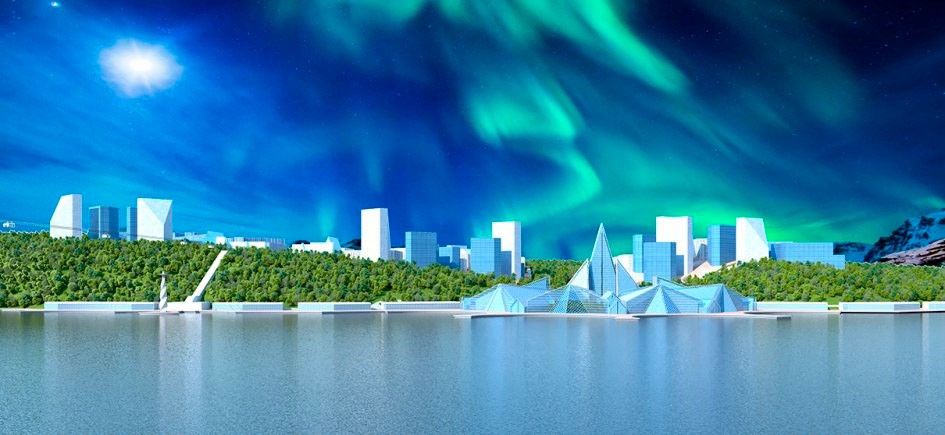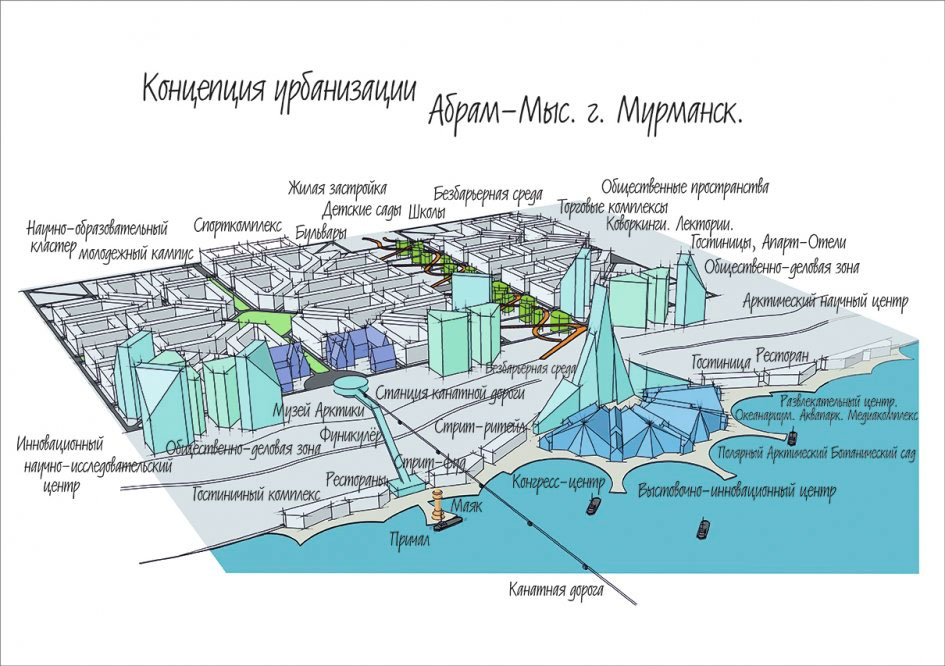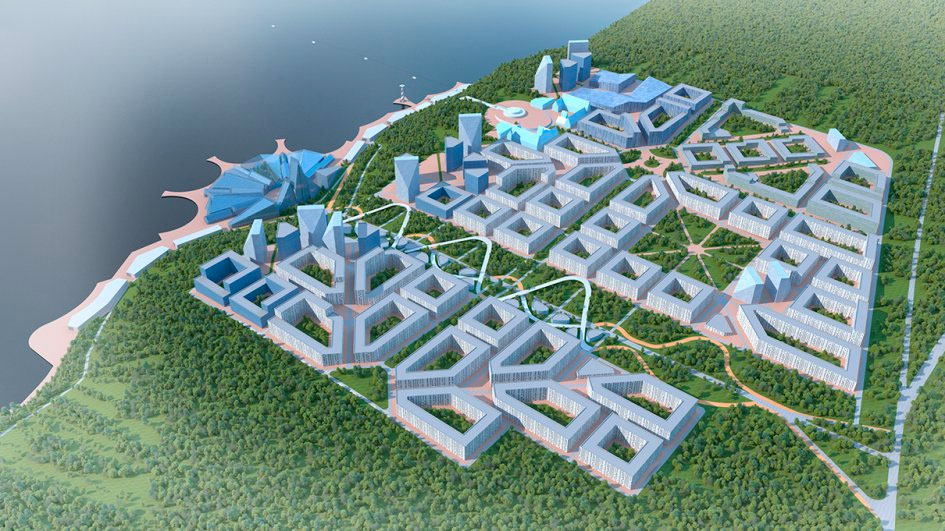Can a new skyline halt the decline of world’s largest Arctic city?
A proposal for a new district in Murmansk in northwestern Russia includes new skyscrapers, a research facility and a conference center.

Marred by population decline and strained economy, Murmansk hopes it can stir growth by building of new futuristic and fancy city quarters on the western shores the Kola Bay.
The project “New Murmansk” was presented by acting regional governor Andrey Chibis in his meeting with President Vladimir Putin last week.
The sketches presented to the president show skyscrapers, five-star hotels, a large conference center and more than 40 large housing complexes.
“This would provide us with new impetus for growth, including for the economy and give us status as the capital of the Arctic,” Chibis underlined.
The new part of the city is projected to be built in Abram-Mys, an area on the western side of the Kola Bay.
A key component in the new city quarters would be a new research and science center, that would focus on nuclear physics.
“We have the nuclear fleet, the submarine fleet, [and] the submariners study in Obninsk [central Russia] while they could have studied directly here, close to their place of service,” the acting governor told the president.
And the projected conference center would help the region set the agenda in Arctic issues, he argued.
“This is a project for a new Murmansk where we can consolidate practically the whole international Arctic agenda, bring it to our place.”
A regional City Development Center was established in July to follow up the project.
Murmansk has since the late 1980s experiences dramatic and un-interrupted out-migration and population decline. The Arctic region today has a population of less than 750,000 compared with 1.2 million in year 1990.
In the City of Murmansk there are now less than 293,000 people. It is still the biggest city north of the Arctic Circle.

